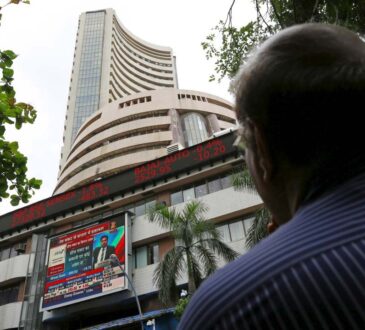
By Lawrence G. McMillan
Volatility is low and market signals are still flashing green
The stock market, as measured by the S&P 500 Index SPX, registered new all-time highs yet again this week. That makes 19 days so far this year that the S&P 500 has made a new all-time high, since the first occurrence on Jan. 19.
Momentum continues to be strong in this market. There had been some resistance at the 5,180 level, but it was overcome on Wednesday after a favorable conclusion to the FOMC meeting. That level should now provide support. Furthermore, there is support in the 5,050 area. In fact, since the S&P 500 traded back and forth between 5,050 and 5,180 several times, that entire area is solid support now.
The S&P 500 is near its rising upper “modified Bollinger Bands” (mBB). There is a very old potential sell signal in place, but it is unlikely to be filled. A more likely occurrence would be for SPX to close above its +4<SIGMA> Band and then begin the process of setting up a new sell signal. That would take some time and it is certainly not guaranteed that even then a sell signal would occur. For example, the last time that the S&P 500 was above the +4<SIGMA> Band was back in February, but that sell signal was never confirmed.
Equity-only put-call ratios have edged higher over the past week or so. Technically, a sell signal would be set up when these ratios are rising. But their advance is so slow that we have not acted on this as a sell signal. A similar thing took place back in January – especially in terms of the weighted ratio – and it was not a valid sell signal either. A true sell signal would see these ratios rising rapidly, as they did last October. So, at this time we are not using these ratios as tradeable signals.
Market breadth weakened at the beginning of the week, and sell signals were generated. However, as is often the case with the breadth oscillators, they are subject to whipsaws. So, the strong positive breadth of March 20 has canceled out any recent sell signals. Even so, we would like to see breadth get highly positive and move strongly into overbought territory as a valid accompaniment to the all-time highs being registered by the S&P 500. One area of breadth – cumulative volume breadth (CVB) – has been strong, though, and it has moved to new all-time highs as confirmation of the new all-time highs in the S&P 500.
New highs on the NYSE continue to be far above the number of new lows, so this indicator remains bullish as it has been since January (and even before that). This buy signal would only be stopped if new lows were to outnumber new highs on the NYSE for two consecutive days.
VIX VIX has been remaining at low levels, despite some potentially volatile events, such as the CPI figures being announced and the FOMC meeting ending. As long as VIX remains at low levels, stocks can continue to rise. The “spike peak” buy signal from VIX has expired and is no longer in place. Moreover, since VIX continues to cross back and forth around its 200-day Moving Average, there is not a VIX signal in place at this time. But the overall picture from VIX is still a positive one for stocks as long as it remains subdued.
The construct of volatility derivatives remains bullish in its outlook for the stock market. The term structures of both the VIX futures and the CBOE Volatility Indices slope upward. April VIX futures are now the front month, and we are watching their price vis-à-vis that of May VIX futures. If April should trade above May, that would be a sell signal, but there has been no hint of that occurring.
In summary, we continue to maintain our “core” bullish position, in line with the bullish S&P 500 chart. We also continue to roll deeply in-the-money calls higher. We will trade other confirmed signals around that “core” position, but there are no confirmed sell signals at the current time.
New recommendations: Recap
For the past few weeks, we have made some conditional recommendations that have not all been filled. We did get a fill on the put buy in CSX (CSX), since the stock broke down and closed below $37.50 on March 14. However, the sell signal from MVB and a longer-term potential buy signal from Walgreens Boots Alliance (WBA) are theoretically still in play. I am going to cancel the MVB sell signal; it’s just too far away. That leaves the Walgreens trade, which we are keeping open but will not continue to reprint the reasoning behind the trade.
If WBA closes above $22.50, then buy 4 WBA June (21st) 22.5 calls in line with the market.
New recommendation: DraftKings (DKNG)
DraftKings (DKNG) has broken out over resistance and is trading at its highest level since October 2021. Stock and option volume patterns are very strong. Buy 2 DKNG May (17th) 46 calls in line with the market. Stop out on a close below $42.
Follow-up action:
All stops are mental closing stops unless otherwise noted.
We are using a “standard” rolling procedure for our SPDR S&P 500 ETF (SPY) SPY spreads: in any vertical bull or bear spread, if the underlying hits the short strike, then roll the entire spread. That would be roll up in the case of a call bull spread or roll down in the case of a bear put spread. Stay in the same expiration and keep the distance between the strikes the same unless otherwise instructed.
Long 4 XLP XLP Apr (5th) 76 calls: The trailing stop remains at $74.70.
All three positions below that were long the SPY Mar (28th) 512 calls were rolled up to the 520 strike when SPY traded at 520 on March 20th. Now, roll the Mar (28th) 520 calls out to the Apr (12th) 520 calls.
Long 2 SPY Mar (28th) 520 calls: This position was initially a long straddle. It was rolled up, and the puts were sold. This is, in essence, our “core” bullish position. Roll the calls up every time they become at least eight points in-the-money. Roll as stated above.
Long 1 SPY Mar (28th) 520 call: This was also originally a long straddle. The put was sold, and the call was rolled up several times. Roll up every time the call is eight points in-the-money. Roll as stated above.
Long 3 TLT TLT May (19th) 95 puts: We will hold as long as the put-call ratio sell signal is in place for U.S. Treasury bonds.
Long 1 SPY Mar (28th) 520 call: This call was bought in line with the new highs vs. new lows buy signal. It was rolled up several times. Stop out if NYSE new lows exceed new highs for two consecutive days. Roll up every time the call is eight points in-the-money. Roll as stated above.
Long 4 BKR Apr (19th) 30 calls: Were bought when Baker Hughes (BKR) closed above $30 on March 6th. Continue to hold as long as the weighted put-call ratio remains on a buy signal.
Long 6 QBTS (QBTS) Apr (19th) 1.0 calls: Stop out on a close below $1.75.
Long 3 APA May (17th) 32.5 calls: We will continue to hold these calls as long as the weighted put-call ratio for APA (APA) remains on a buy signal.
Long 4 CSX May (17th) 37.50 puts: Were bought when CSX closed below 37.50 on March 14th. We will hold these puts as long as the weighted put-call ratio for CSX remains on a sell signal.
All stops are mental closing stops unless otherwise noted.
Send questions to: lmcmillan@optionstrategist.com.
Lawrence G. McMillan is president of McMillan Analysis, a registered investment and commodity trading advisor. McMillan may hold positions in securities recommended in this report, both personally and in client accounts. He is an experienced trader and money manager and is the author of “Options as a Strategic Investment.” www.optionstrategist.com
(c)McMillan Analysis Corporation is registered with the SEC as an investment advisor and with the CFTC as a commodity trading advisor. The information in this newsletter has been carefully compiled from sources believed to be reliable, but accuracy and completeness are not guaranteed. The officers or directors of McMillan Analysis Corporation, or accounts managed by such persons may have positions in the securities recommended in the advisory.
-Lawrence G. McMillan
This content was created by MarketWatch, which is operated by Dow Jones & Co. MarketWatch is published independently from Dow Jones Newswires and The Wall Street Journal.
(END) Dow Jones Newswires
03-21-24 1543ET
Copyright (c) 2024 Dow Jones & Company, Inc.

